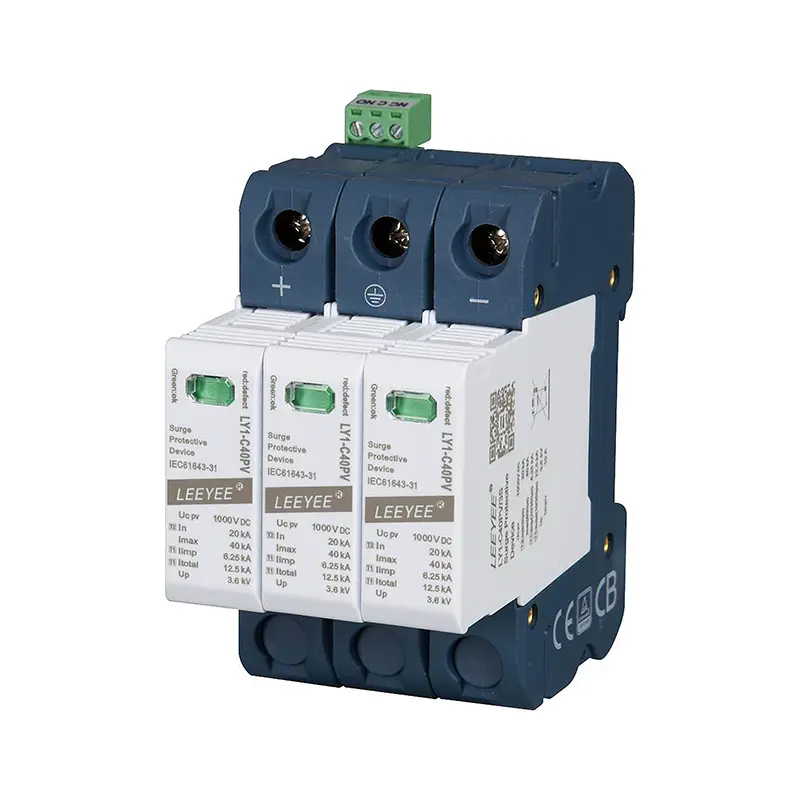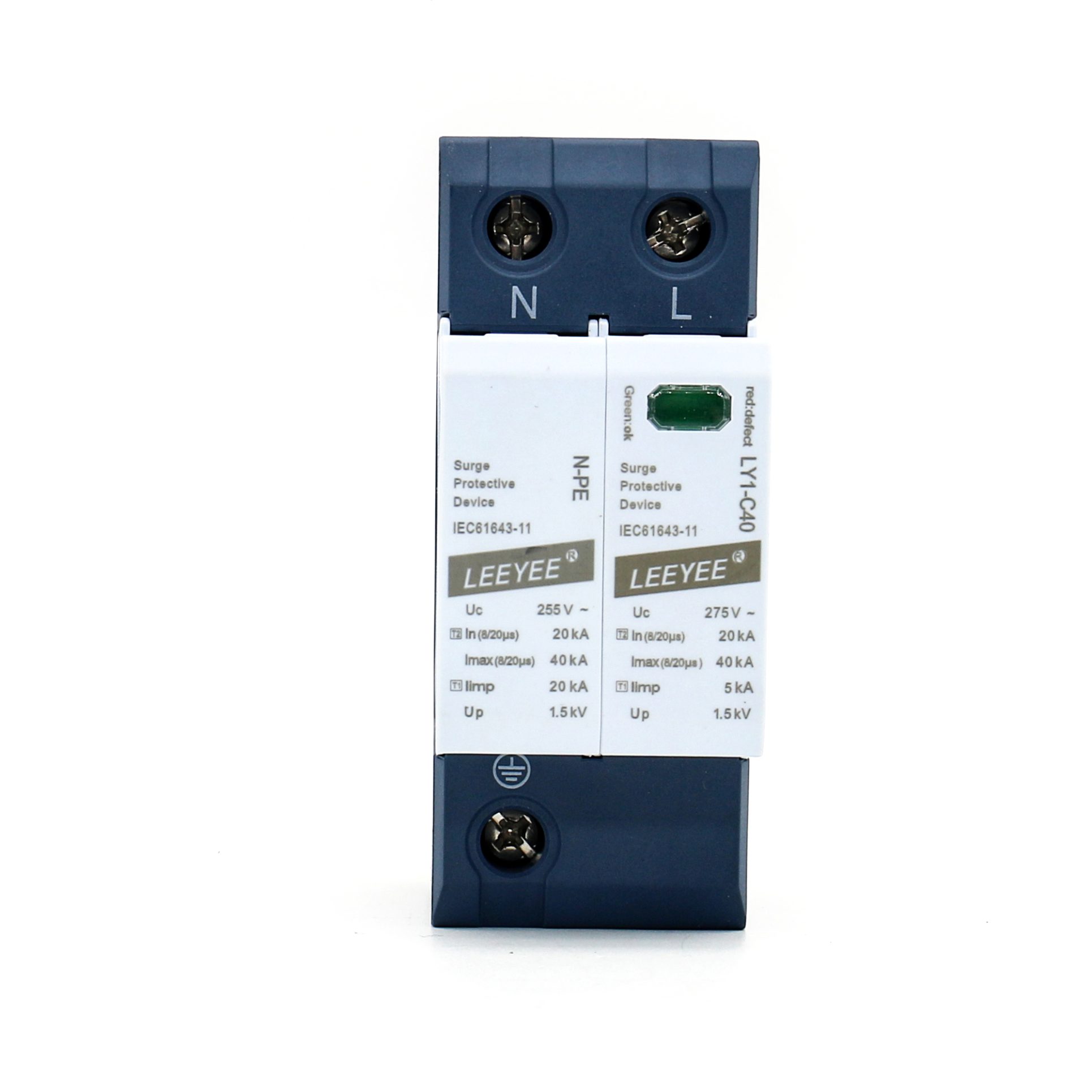Table of Contents
Introduction
In modern electrical systems, the safety of power supplies and devices is of paramount importance. Power systems are often subjected to various voltage transients, especially surge voltages, which can cause significant damage to electrical equipment. To protect these devices from harm, Surge Protective Devices (SPDs) have emerged. Among these, Metal Oxide Varistor (MOV) has proven to be an effective and widely used component for surge protection. This article will explore the working principle, characteristics, applications, advantages, and disadvantages of MOV, helping readers understand its crucial role in surge protection devices.
Working Principle of MOV
A Metal Oxide Varistor (MOV) is a nonlinear resistor whose resistance changes with the applied voltage. When the voltage is below a specific threshold, the MOV behaves as a high-resistance element, conducting little to no current. However, when the voltage exceeds that threshold, the MOV rapidly transitions to a low-resistance state, allowing current to pass through and effectively “shorting” the excess voltage to ground. This characteristic enables MOVs to protect electrical devices from transient surges effectively.
Specifically, when a surge voltage (such as that caused by lightning or the switching operation of power equipment) is applied to an MOV, it quickly conducts, absorbing and dissipating the excess energy, preventing over-voltage from propagating to downstream electrical devices. This mechanism is vital for protecting sensitive electronic components, such as computers, televisions, and other household appliances.
Characteristics of MOV
The characteristics of MOV play a significant role in its effectiveness in surge protection, primarily including the following aspects:
- Voltage-Current Characteristics: The voltage-current characteristic curve of an MOV is critical to its performance. Generally, MOV exhibits high resistance under normal operating voltage, while rapidly transitioning to low resistance when the breakdown voltage is exceeded. This property allows MOV to respond swiftly to transient over-voltage conditions.
- Energy Absorption Capability: The energy absorption capability of an MOV is an essential metric for evaluating its protective abilities. The rated energy of an MOV (typically measured in joules) indicates the maximum energy it can absorb during protection. Choosing an MOV with adequate energy absorption capacity is crucial for effective device protection.
- Response Time: MOVs typically have response times in the nanosecond range, meaning they can quickly detect over-voltage and take action. This rapid response characteristic is a significant advantage of MOVs in protecting against transient over-voltage.
Types of MOV
MOVs are categorized based on their structure and application scenarios, including:
- Surface Mount Device (SMD) MOV: This type of MOV is commonly used in miniaturized electronic devices, with a surface mount design that makes it suitable for modern circuit board manufacturing.
- Axial Lead MOV: Axial lead MOVs are typically used in larger electrical equipment and have a higher power handling capability, making them suitable for use in both residential and industrial applications.
- Multi-Layer Ceramic MOV: This type of MOV uses multi-layer ceramic materials to provide higher voltage ratings and energy absorption capabilities, making it suitable for high-demand applications.
Applications of MOV
MOVs are widely used in various fields to protect different electrical devices. Here are some common application scenarios:
- Household Appliance Protection: In homes, MOVs are often employed to protect televisions, computers, refrigerators, and other appliances from voltage transients, ensuring normal operation and extending service life.
- Industrial Equipment Protection: In industrial environments, MOVs can protect large motors, transformers, and other heavy-duty equipment from damage caused by voltage surges.
- Telecommunications Equipment Protection: Telecommunications equipment, such as base stations and switches, are highly sensitive; MOVs can effectively prevent damage from lightning strikes and power fluctuations.
- Computer and Network Equipment Protection: Computers and network devices are extremely sensitive to voltage fluctuations, making MOVs essential for preventing data loss and equipment failures.
Advantages and Disadvantages of MOV
The widespread use of MOVs is due to their numerous advantages, but they also have some disadvantages.
Advantages:
- Cost-Effective: MOVs are relatively low-cost components, making them an economical and practical solution for surge protection.
- Rapid Response: Due to their fast response characteristics, MOVs can quickly react to transient over-voltage, effectively protecting devices.
- High Energy Surge Handling: MOVs have high energy absorption capabilities, allowing them to handle high-energy surges from lightning or power equipment failures.
Disadvantages:
- Potential for Failure with Frequent Use: The performance of MOVs may gradually degrade over time, especially after experiencing frequent surge events.
- Limited Resistance to Long-term Over-Voltage: MOVs can be damaged under prolonged over-voltage conditions (such as unstable grid voltage), leading to loss of protective functionality.
How to Choose the Right MOV
When selecting an MOV as a surge protection device, several factors need consideration:
- Rated Voltage: The rated voltage of the MOV should be higher than the normal operating voltage of the device to ensure it does not affect the device’s operation under normal conditions.
- Energy Absorption Capability: Evaluate the potential surge energy based on the application scenario and select an MOV with appropriate energy absorption capacity to ensure adequate device protection.
- Environmental Conditions and Operating Conditions: Different working environments (such as humidity, temperature) may affect the MOV’s performance, so choose MOVs suitable for specific environments.
Maintenance and Replacement of MOV
To ensure MOVs continue to effectively protect devices, maintenance and replacement are crucial:
Maintenance Considerations:
- Regularly check the MOV’s condition to ensure no physical damage is present.
- Monitor the operating voltage of devices to avoid prolonged over-voltage conditions.
Timing for Replacement:
- Consider replacing the MOV if its indicator light goes out or if the device shows abnormal behavior.
- Follow the manufacturer’s recommendations for periodic replacement to maintain safety.
Future Development Trends
With advancements in technology and the continuous update of electrical equipment, MOV technology is also evolving. Potential future trends include:
- Material Innovations: The application of new materials may enhance MOV performance and durability, increasing their capabilities in more complex electrical systems.
- Intelligent Protection: Combining MOV technology with smart grid technology could integrate more intelligent monitoring and control functions, resulting in more efficient surge protection.
Conclusion
Metal Oxide Varistors (MOVs) play a vital role in surge protection devices. Their unique working principles and superior electrical characteristics make them an indispensable component in modern electrical equipment protection. By selecting and maintaining MOVs appropriately, we can effectively safeguard electrical devices, extend their service life, and ensure their safe operation. As technology progresses, the potential applications for MOVs will expand, making them an important subject of ongoing interest.
Frequently Asked Questions (FAQ)
- What is the lifespan of an MOV? The lifespan of an MOV depends on the number of surge events it endures and the energy levels it experiences. Typically, it can last for several years under normal usage, but it is advisable to conduct regular checks and replacements.
- How do I know if my device needs an MOV? If your device is located in an area prone to lightning strikes or significant voltage fluctuations, it is recommended to use MOVs or other surge protection devices.
- What are the signs of MOV failure? Signs of MOV failure may include device malfunction, the indicator light going out (if equipped), or visible physical damage.
Through a comprehensive understanding of MOVs, readers can better appreciate their significance in surge protection devices and how to effectively utilize these protective measures to ensure electrical system safety and stability. If you have more questions about MOVs or surge protection, feel free to reach out—we are happy to assist you!


